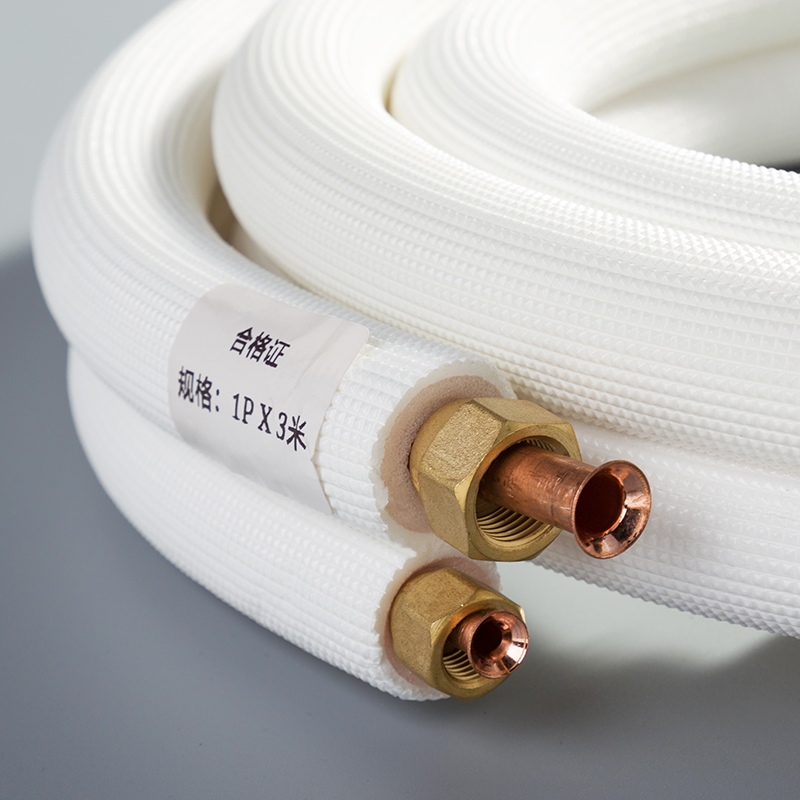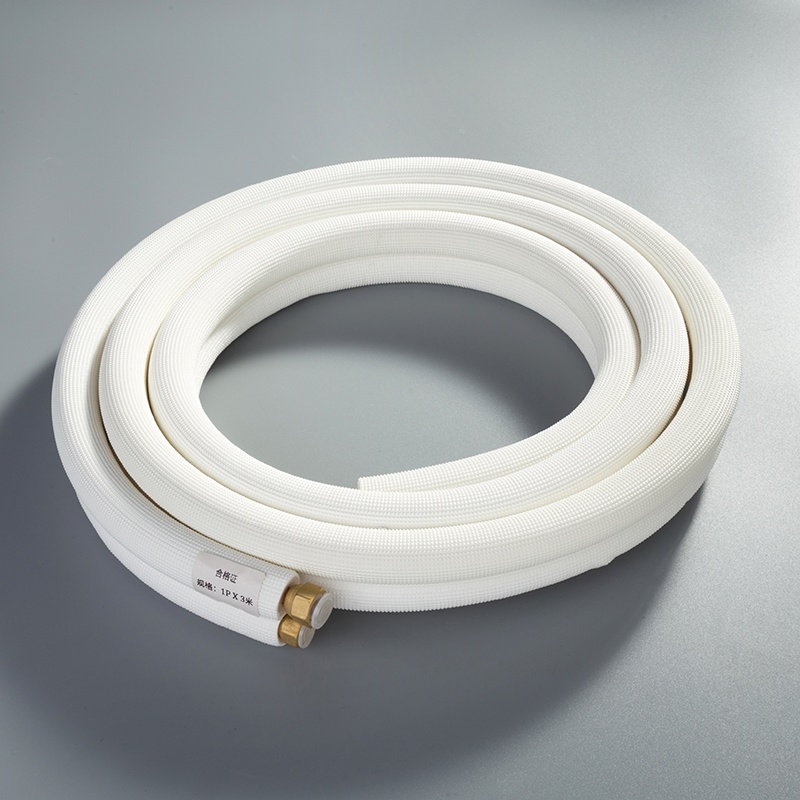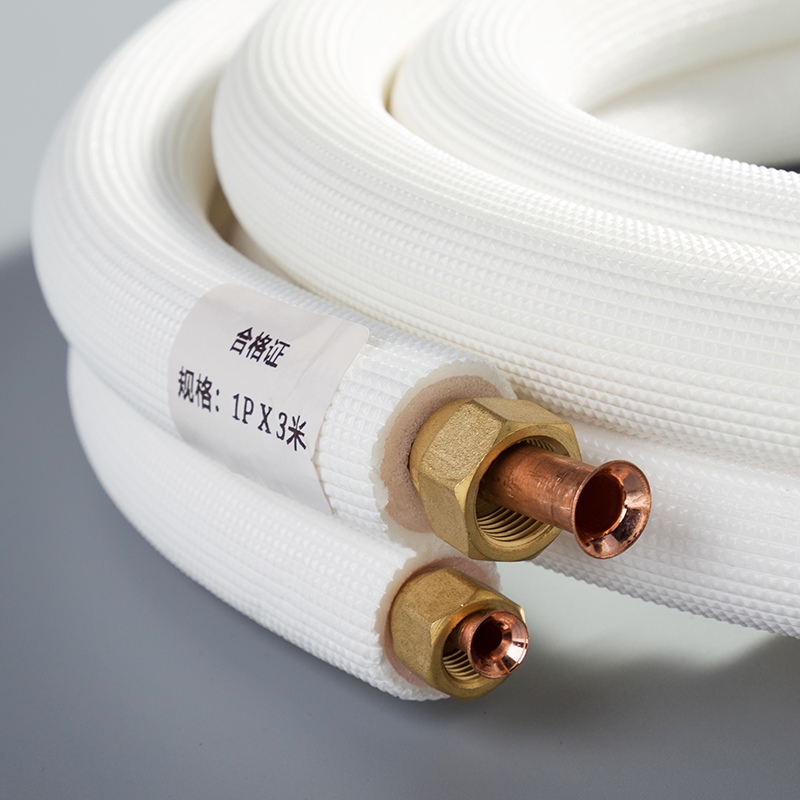Easy Steps to Solder Copper Pipes Without a Flame

When it comes to soldering copper pipes without a flame, the significance of this technique cannot be overstated. Understanding the steps involved is crucial for a successful outcome. Equipping oneself with the necessary tools and materials, such as a copper pipe crimping tool, is the first step towards mastering this skill. From cleaning the copper pipe to applying flux, each stage plays a vital role in achieving a secure joint. By delving into these details, individuals can confidently embark on their journey of learning how to solder copper pipe.
Prepare the Copper Pipe

To start the process of preparing the copper pipe, it is essential to ensure that both cleanliness and smoothness are achieved. The first step involves cleaning the pipe thoroughly using emery cloth. This abrasive material helps in removing any dirt or debris that could hinder the soldering process. By rubbing the emery cloth along the surface of the copper pipe, a clean foundation is established for successful soldering.
Once the pipe is clean, the next step is to debur it effectively. Using a pipe cutting tool, carefully trim any rough edges or protrusions from the copper pipe. This meticulous task ensures that no obstacles remain on the surface, allowing for a seamless connection during soldering. By creating smooth edges, the likelihood of achieving a strong and durable joint significantly increases.
Remember, proper preparation sets the stage for a successful soldering experience. By dedicating time to cleaning and deburring the copper pipe, individuals can enhance their skills in working with this versatile material.
Apply Flux
Use a Flux Brush
To begin the flux application process, take the flux brush and ensure an even distribution of flux on both surfaces. This step is crucial in preparing the copper pipe for soldering by promoting proper adhesion between the materials. By applying the flux evenly, you create a conducive environment for the subsequent stages of the soldering process.
Apply Evenly
When using the flux brush, maintain a steady hand to achieve uniform coverage across the surfaces. The goal is to coat both sides of the joint comprehensively, allowing for effective bonding during soldering. Consistency in application ensures that every part of the connection receives adequate protection and facilitates a strong and durable joint.
Cover Both Surfaces
Ensure that both surfaces are fully covered with flux to guarantee optimal results. By coating all areas that will be joined together, you enhance the overall integrity of the soldered connection. Complete coverage minimizes the risk of oxidation and promotes a smooth flow of filler metal, essential for creating a secure bond between the copper pipes.
Importance of Proper Fluxing
Properly applying flux serves two critical purposes in soldering copper pipes: absorbing oxides and facilitating filler metal flow. These functions are essential for ensuring a successful and long-lasting joint between the pipes. Embracing correct fluxing techniques enhances the overall effectiveness of your soldering process.
Absorb Oxides
Flux plays a vital role in absorbing oxides from the surfaces of copper pipes, preventing impurities from interfering with the solder bond. By effectively removing these contaminants, you create a clean environment for seamless soldering, ultimately leading to a robust connection.
Promote Filler Metal Flow
Facilitating filler metal flow is another key function of flux during soldering. The presence of flux enables molten filler metal to spread evenly across the joint, enhancing its structural integrity. This promotes a secure bond between copper pipes and contributes to the longevity of your plumbing system.
Use a Copper Pipe Crimping Tool

When it comes to securing copper pipes without the need for traditional soldering methods, employing a copper pipe crimping tool is a game-changer. This specialized tool offers a reliable and efficient way to create strong joints in plumbing systems. Before proceeding with the crimping process, it is essential to select the right tool that suits your specific requirements.
Select the Right Tool
Types of Crimping Tools
Copper Fitting or Adapter: These fittings are crucial components that ensure a secure connection between copper pipes. They come in various sizes to accommodate different pipe diameters.
Bernzomatic Torch: Utilizing a torch like the BZ820HT can provide the necessary heat for crimping operations. The trigger igniter and flexible tank connection enhance convenience during use.
Pipe Cutter: A reliable pipe cutter allows for precise cutting of copper pipes, ensuring clean edges for seamless connections.
Tool Features
Propane Fuel Option: Opting for propane as a fuel source offers a slightly lower temperature flame compared to MAP fuel, ideal for soldering copper pipes effectively.
Trigger Igniter: The presence of a trigger igniter simplifies the ignition process, making it convenient for projects requiring frequent starts and stops.
Flexible Connection: A flexible connection to the tank enhances maneuverability, especially in tight spaces where traditional tools may be challenging to operate.
Crimp the Joint
Position the Tool
Before crimping the joint, position the crimping tool securely over the designated area on both copper pipes. Ensure that the tool is aligned correctly to apply uniform pressure during the crimping process.
Secure the Joint
Once positioned, initiate the crimp by applying controlled pressure using the tool's mechanism. The goal is to create a tight seal between the copper pipes without compromising their structural integrity. A well-executed crimp ensures leak-free connections and long-lasting performance in your plumbing system.
Ensure a Dry Joint
Importance of a Dry Joint
To prevent leaks and ensure a strong bond between copper pipes, it is crucial to maintain a dry joint throughout the soldering process. By avoiding any moisture or contaminants at the joint, you significantly reduce the risk of future plumbing issues. A dry joint acts as a solid foundation for the soldered connection, enhancing its durability and longevity.
Prevent Leaks
A dry joint plays a vital role in preventing leaks within your plumbing system. When moisture is present during soldering, it can compromise the integrity of the joint, leading to potential water seepage. By maintaining a dry environment during the soldering process, you create a secure seal between the copper pipes, minimizing the chances of leaks and ensuring efficient water flow.
Ensure Strong Bond
In addition to leak prevention, a dry joint contributes to establishing a robust bond between copper pipes. Solder adheres best to clean and dry surfaces, allowing for optimal penetration and adhesion. This strong bond not only enhances the structural stability of the connection but also promotes efficient water flow within your plumbing system.
Mechanical Joints as an Alternative
When traditional soldering methods are not feasible or preferred, mechanical joints offer an effective alternative for connecting copper pipes securely. Utilizing screw-down clamps provides a reliable way to join pipes without the need for heat-based techniques.
Use Screw-Down Clamps
Screw-down clamps are versatile devices that enable quick and easy connections between copper pipes. By tightening the screws securely, you create a tight seal that prevents leaks and ensures long-lasting performance. These clamps are ideal for situations where traditional soldering is impractical or when working in confined spaces.
Benefits of Mechanical Joints
Opting for mechanical joints like screw-down clamps offers several advantages in plumbing applications. These joints are reusable, allowing for adjustments or disconnections if needed. Additionally, they eliminate the risks associated with heat-based methods, making them safer alternatives for joining copper pipes. The simplicity and reliability of mechanical joints make them valuable additions to any plumbing toolkit.
Crafting a well-soldered copper joint is highly satisfying, akin to landing a silky smooth upshift or turning on a brand new light for the first time. With good prep and practice, any handy homeowner can master the art of soldering copper pipes. The importance of each step, from cleaning to crimping, cannot be overstated. Future considerations should include exploring different fluxes for varied effects and considering mechanical joints as reliable alternatives. Embrace the joy of soldering and let it become as enjoyable an experience for you as it is for many others!
See Also
Simple Tricks for Soldering 1 1/2 Copper Pipes
Quick Fixes for Copper Pipe Leaks
Simple Guide to Connecting Compression Fittings on Curved Copper Pipes


